Abstract
Twenty-eight patients with heart failure caused by congestive cardiomyopathy, which had been diagnosed according to the criteria of Goodwin and Oakley, were treated with beta-blocking agents for six to 62 months, except for four patients who died within two months. Repeated non-invasive investigations were performed before and during treatment as well as exercise tests and chest x-rays. The echocardiographic and pulse curve findings indicated an improvement in systolic and diastolic myocardial function. The ejection fraction increased from 0.32 +/- 0.02 to 0.42 +/- 0.04, and the third heart sound amplitude and rapid filling wave were significantly reduced. The functional classification improved in 15 patients while in 12 patients it remained unchanged and in one it deteriorated. During follow-up, 10 patients died, most of them suddenly. The mortality was lower than expected in this severely ill group of patients. The beneficial effect of chronic beta-blockade in patients with congestive cardiomyopathy suggests that catecholamines are involved in the pathogenesis of congestive cardiomyopathy, and that patients with congestive cardiomyopathy may have inappropriate sympathetic cardiac stimulation which can be reduced by chronic beta-blockade. It is suggested that beta-receptor blockade should be added to conventional treatment with digitalis and diuretics in all patients with severe myocardial failure caused by congestive cardiomyopathy.
Full text
PDF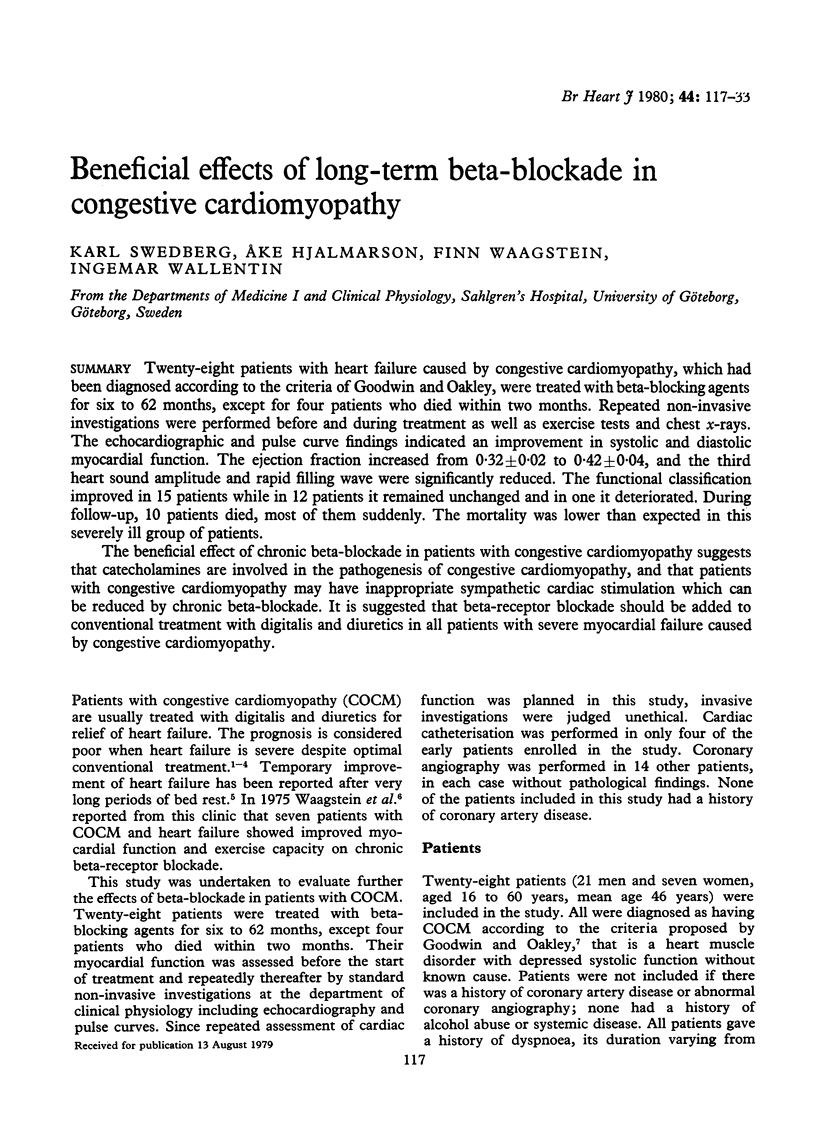
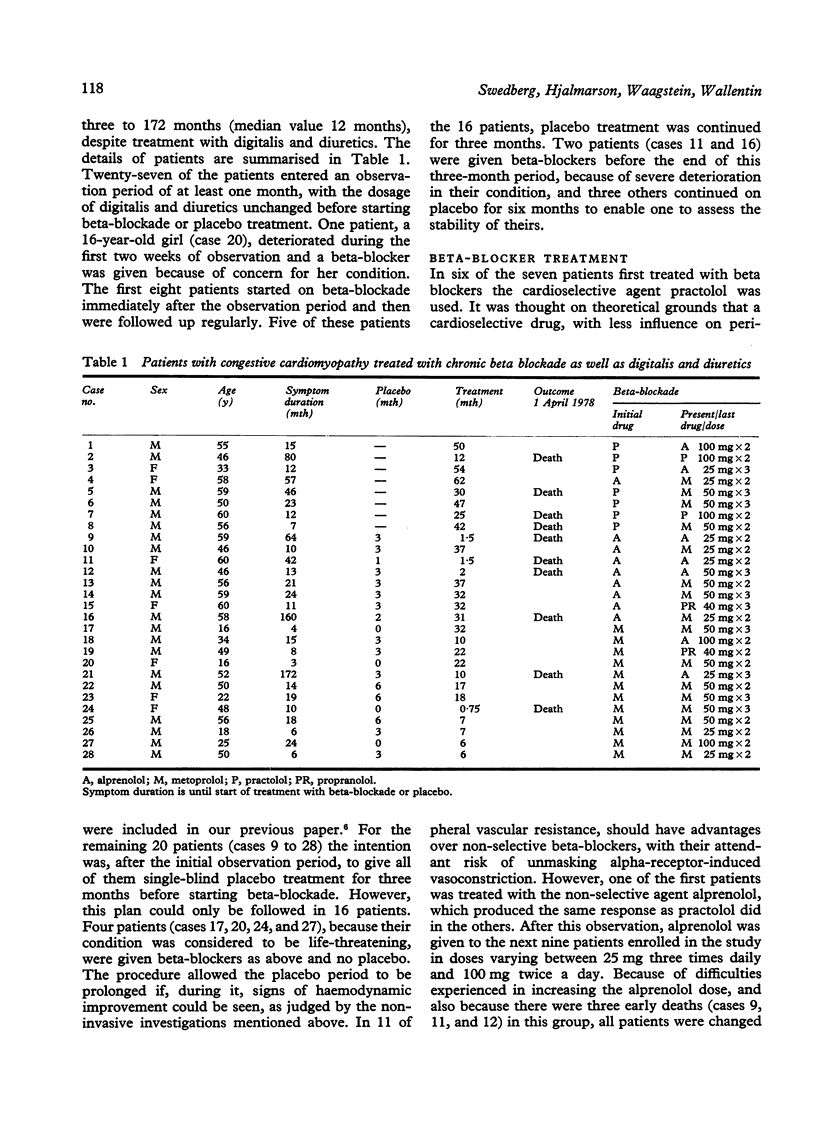
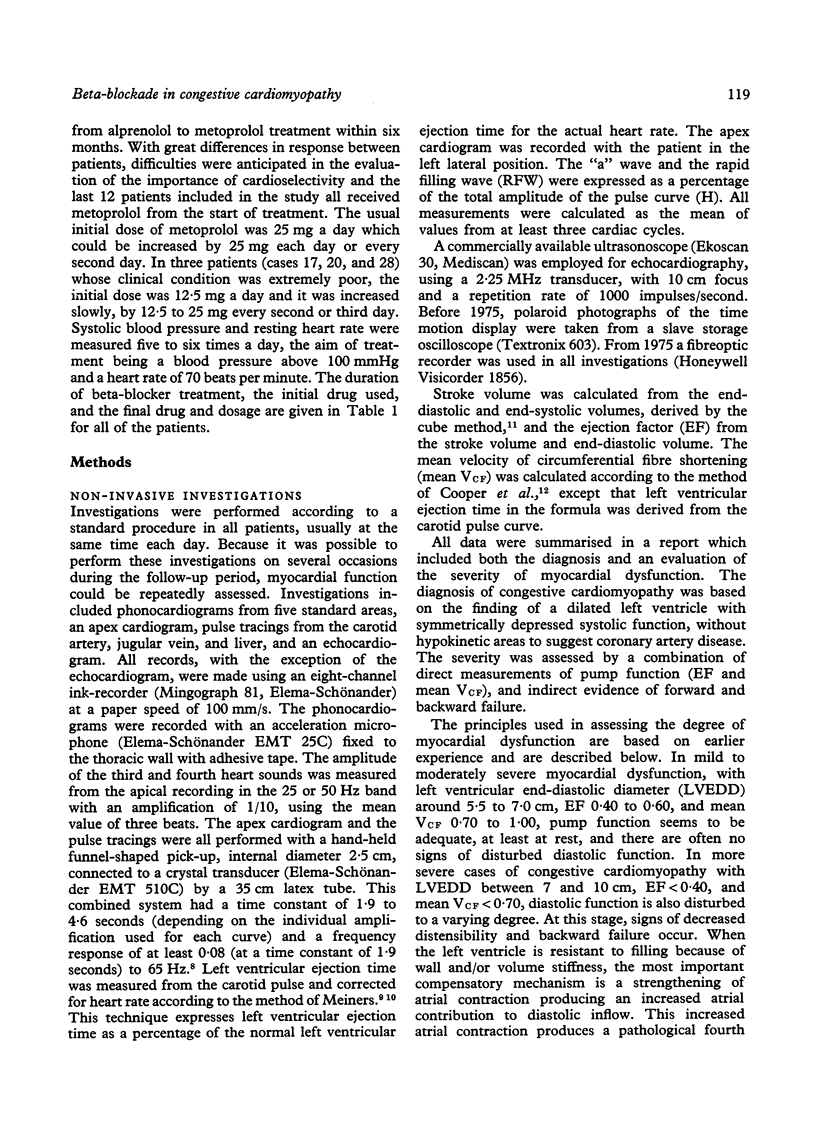
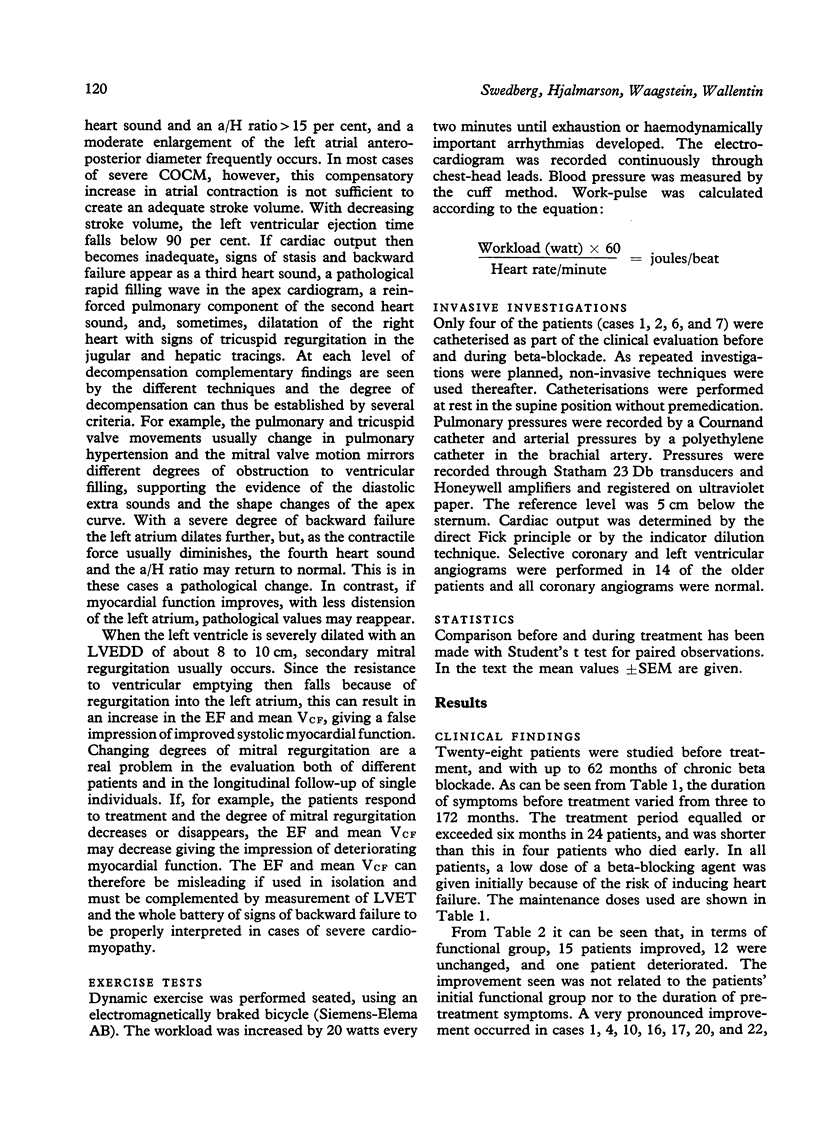
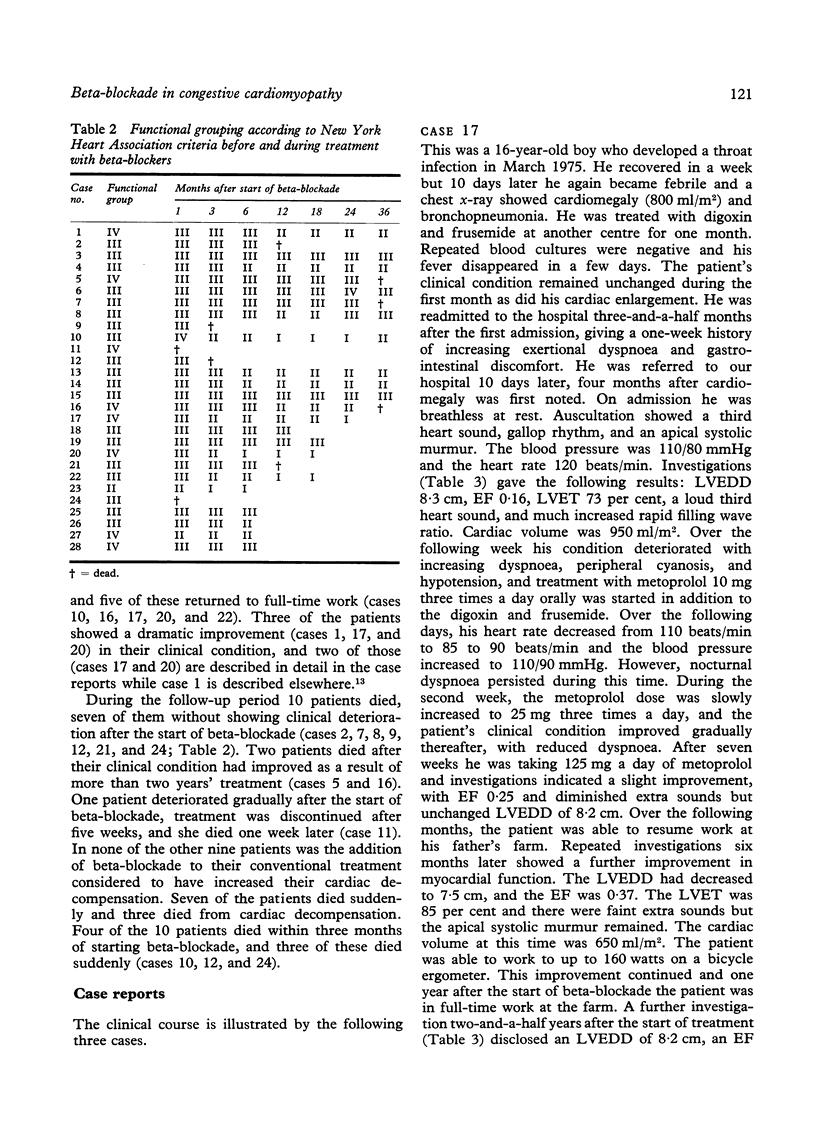
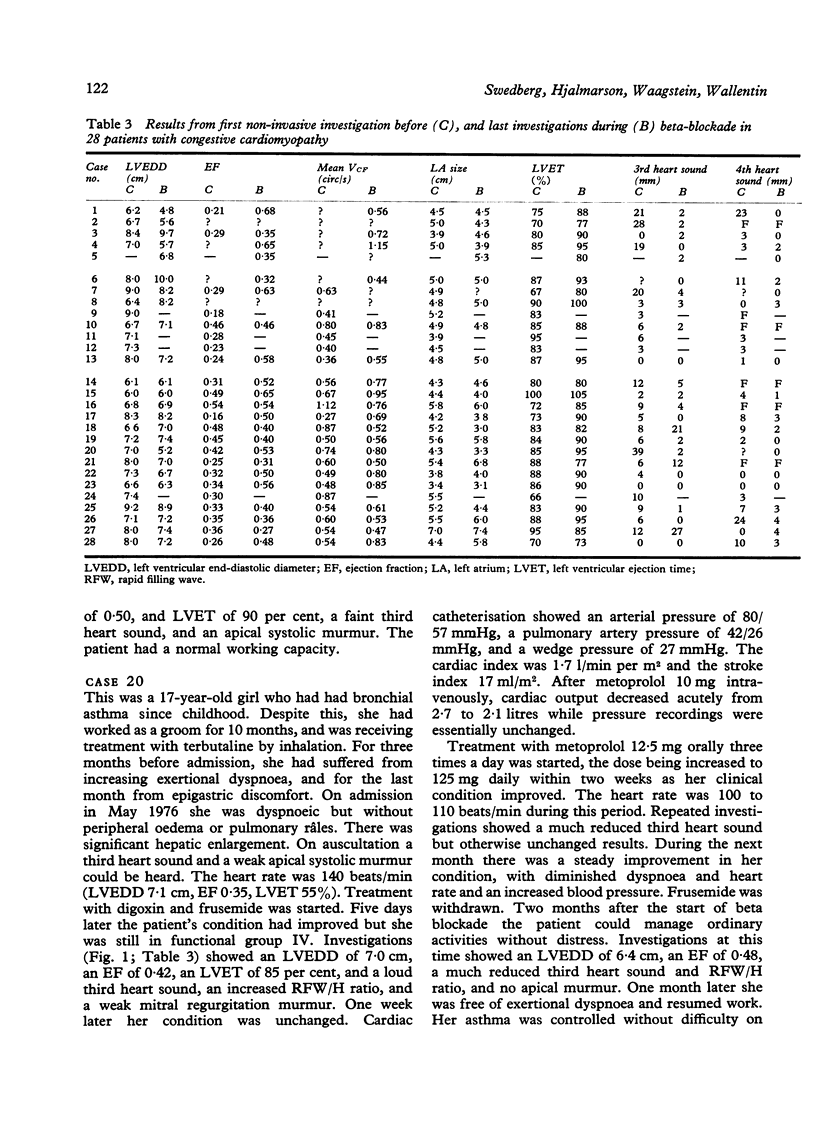
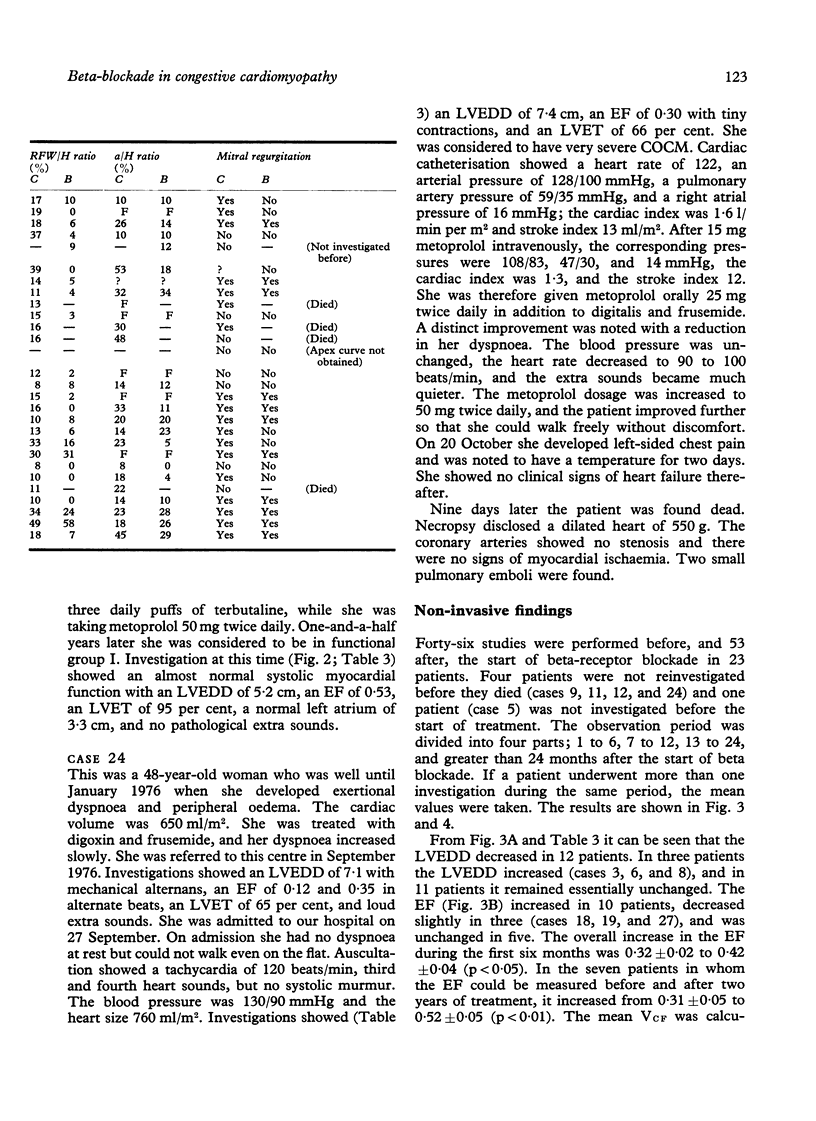
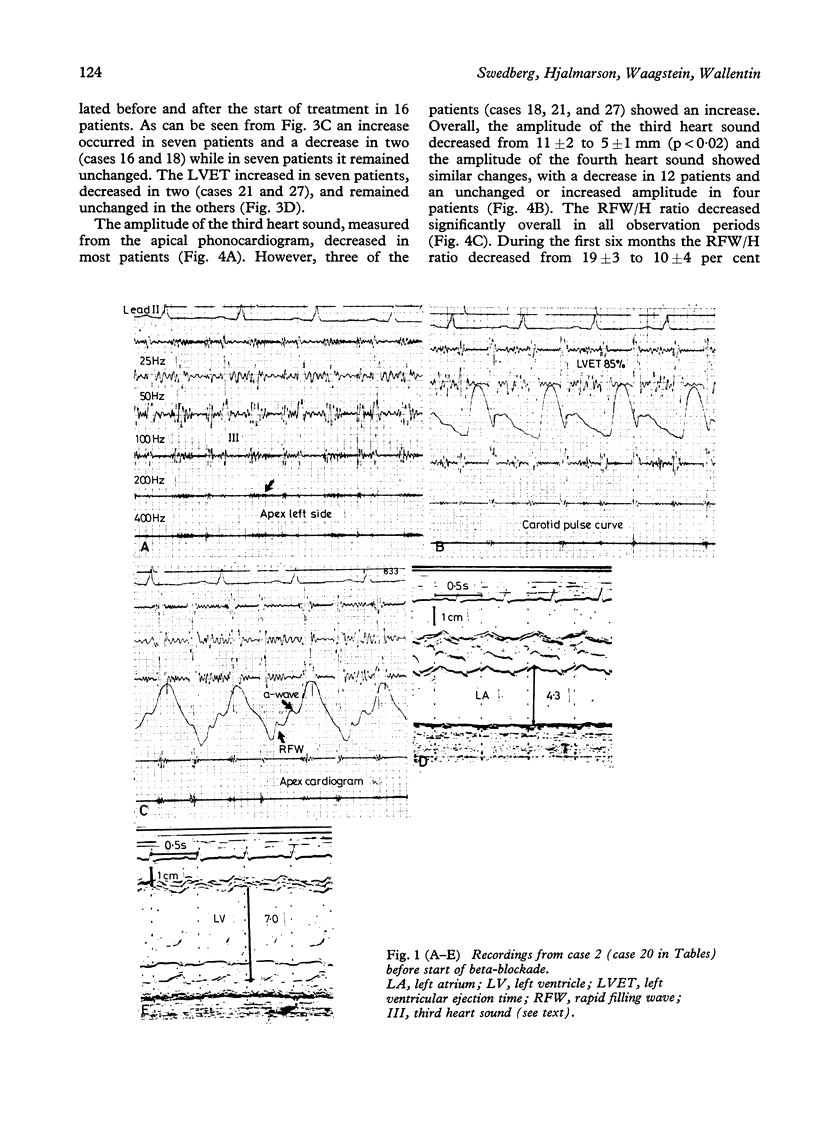
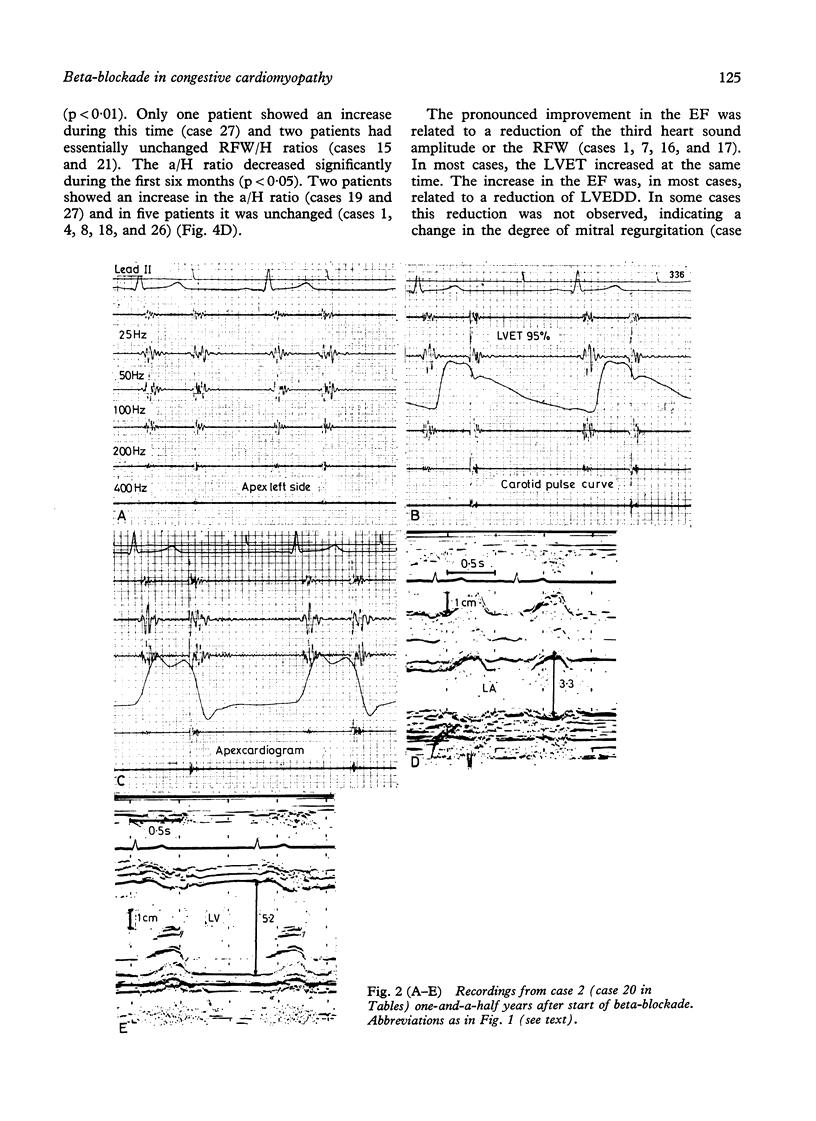
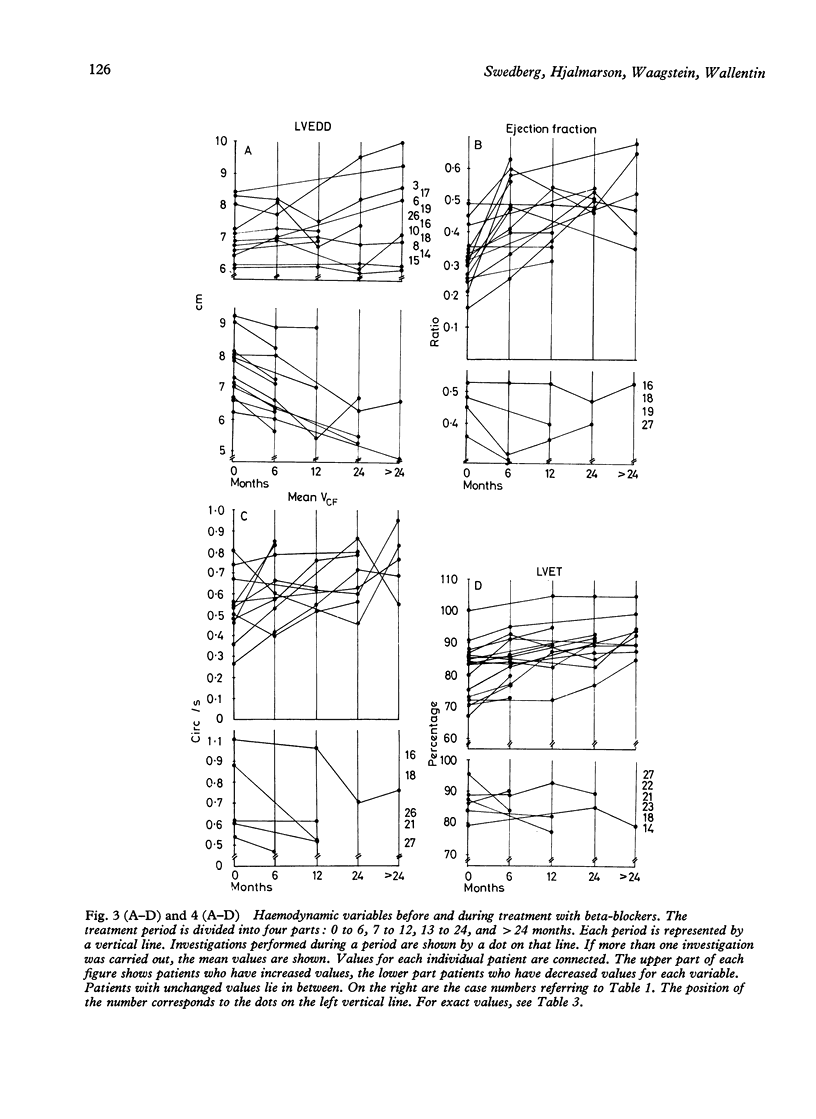
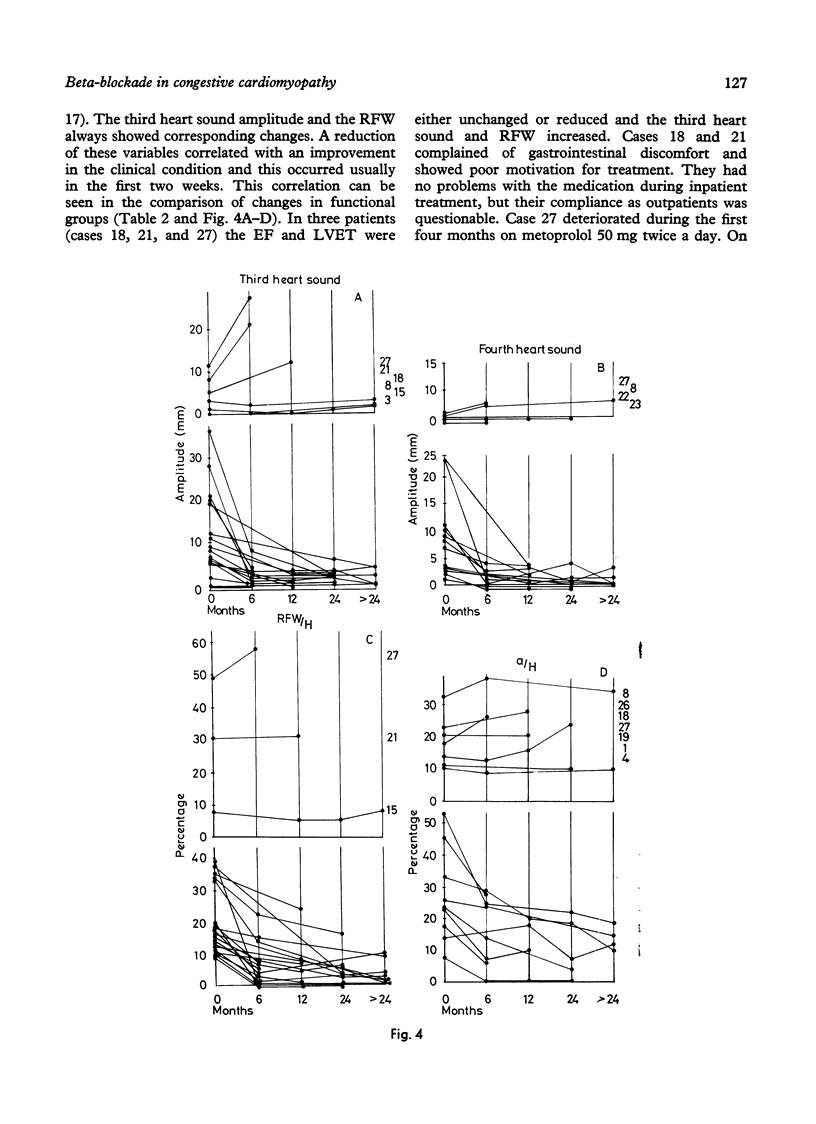
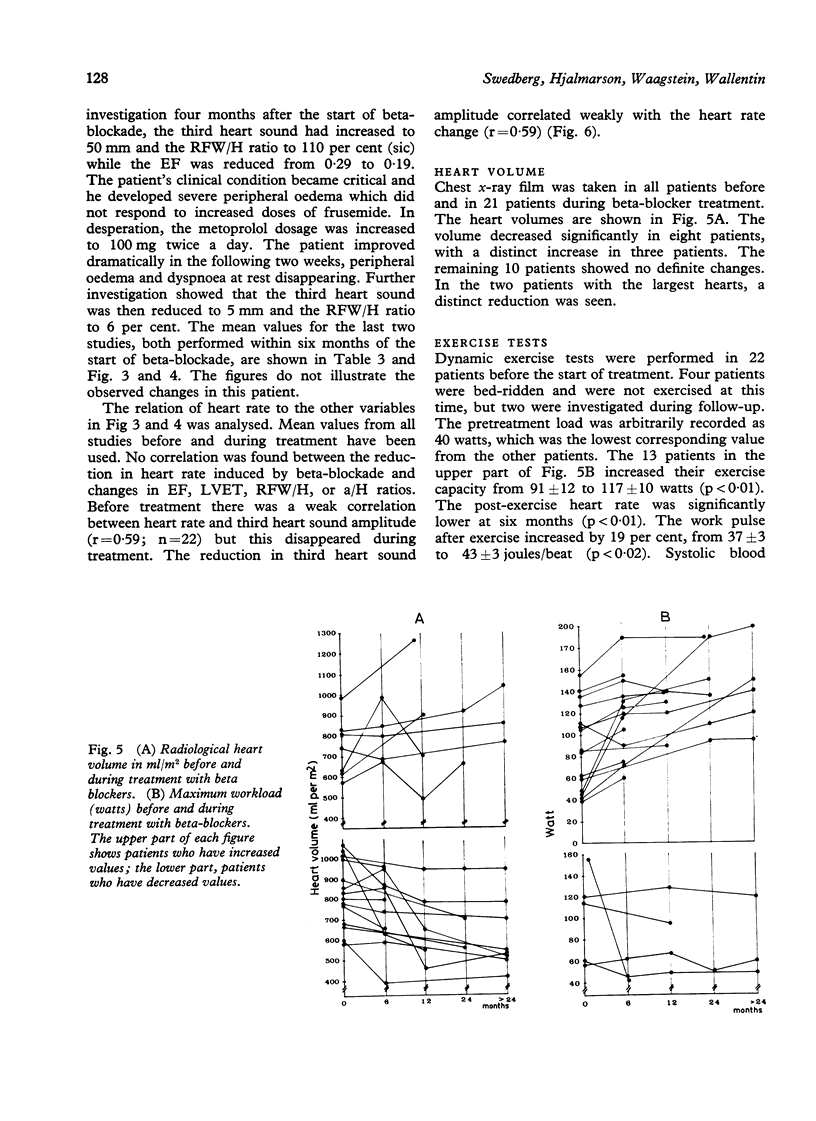
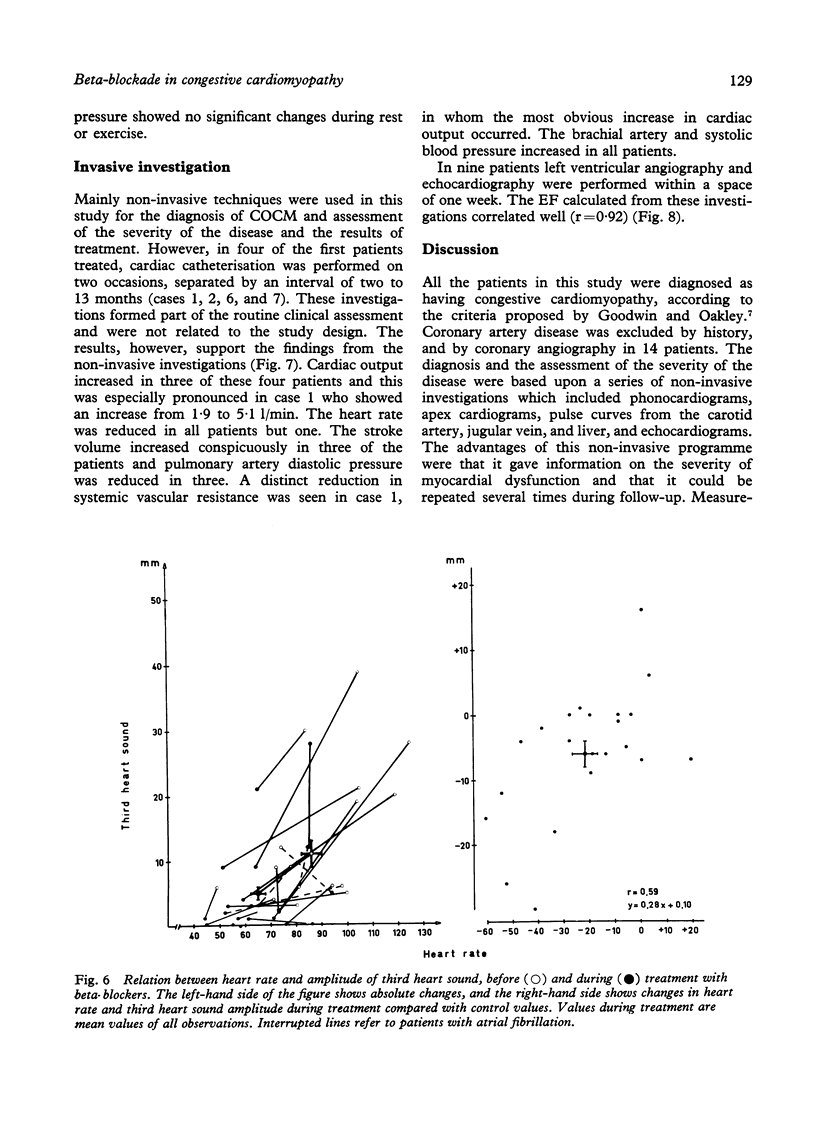
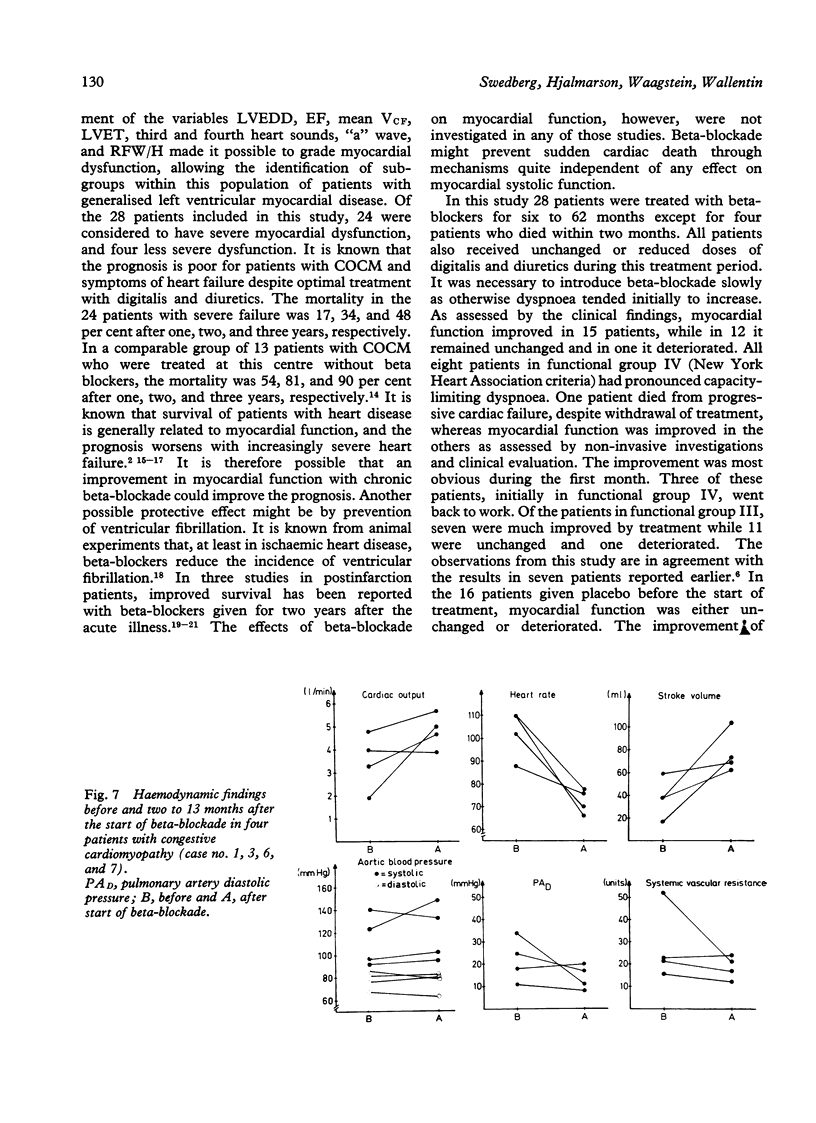
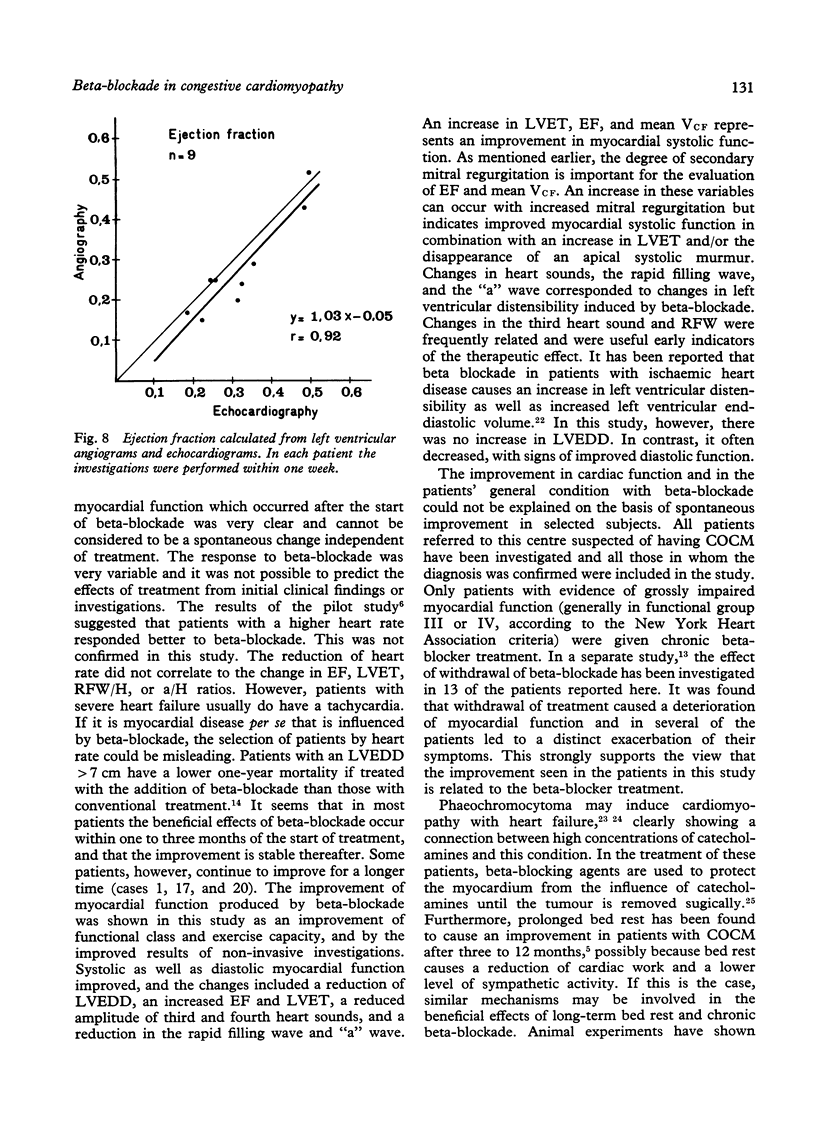
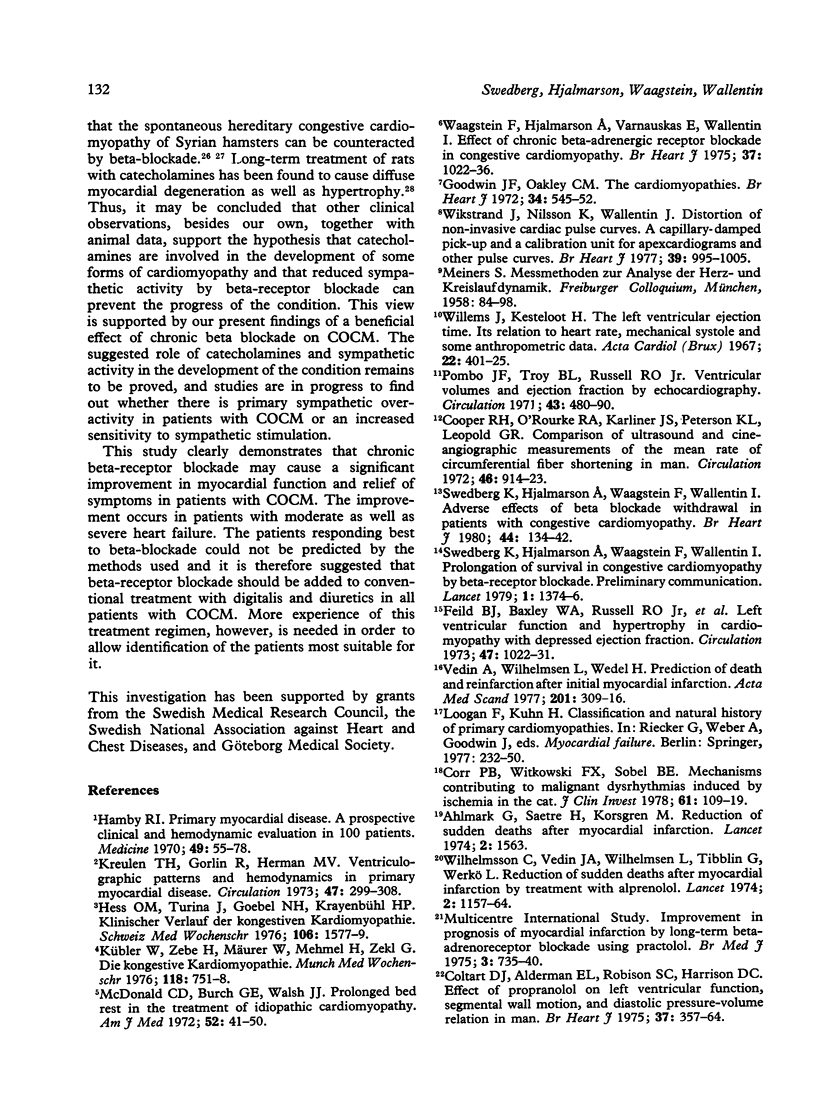
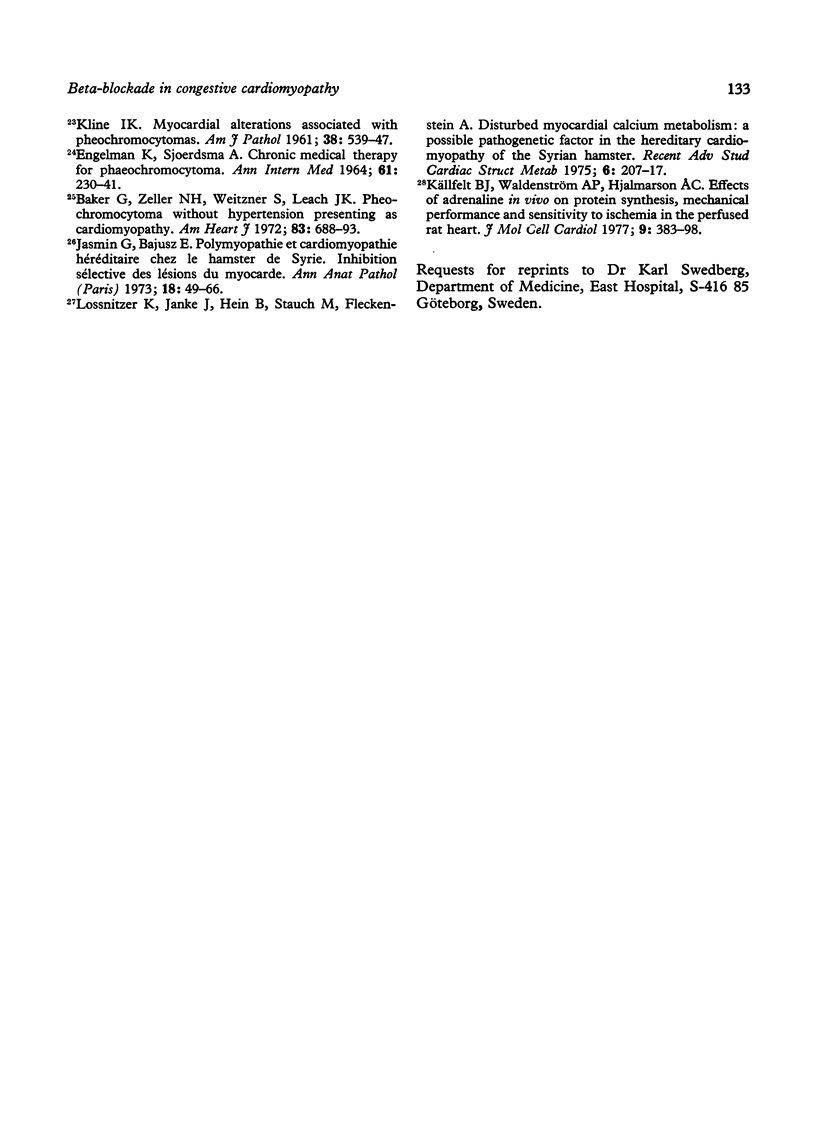
Selected References
These references are in PubMed. This may not be the complete list of references from this article.
- Ahlmark G., Saetre H., Korsgren M. Letter: Reduction of sudden Deaths after myocardial infarction. Lancet. 1974 Dec 28;2(7896):1563–1563. doi: 10.1016/s0140-6736(74)90299-2. [DOI] [PubMed] [Google Scholar]
- Baker G., Zeller N. H., Weitzner S., Leach J. K. Pheochromocytoma without hypertension presenting as cardiomyopathy. Am Heart J. 1972 May;83(5):688–693. doi: 10.1016/0002-8703(72)90410-3. [DOI] [PubMed] [Google Scholar]
- Coltart J., Alderman E. L., Robison S. C., Harrison D. C. Effect of propranolol on left ventricular function, segmental wall motion, and diastolic pressure-volume relation in man. Br Heart J. 1975 Apr;37(4):357–364. doi: 10.1136/hrt.37.4.357. [DOI] [PMC free article] [PubMed] [Google Scholar]
- Cooper R. H., O'Rourke R. A., Karliner J. S., Peterson K. L., Leopold G. R. Comparison of ultrasound and cineangiographic measurements of the mean rate of circumferential fiber shortening in man. Circulation. 1972 Nov;46(5):914–923. doi: 10.1161/01.cir.46.5.914. [DOI] [PubMed] [Google Scholar]
- Corr P. B., Witkowski F. X., Sobel B. E. Mechanisms contributing to malignant dysrhythmias induced by ischemia in the cat. J Clin Invest. 1978 Jan;61(1):109–119. doi: 10.1172/JCI108908. [DOI] [PMC free article] [PubMed] [Google Scholar]
- Feild B. J., Baxley W. A., Russell R. O., Jr, Hood W. P., Jr, Holt J. H., Dowling J. T., Rackley C. E. Left ventricular function and hypertrophy in cardiomyopathy with depressed ejection fraction. Circulation. 1973 May;47(5):1022–1031. doi: 10.1161/01.cir.47.5.1022. [DOI] [PubMed] [Google Scholar]
- Goodwin J. F., Oakley C. M. The cardiomyopathies. Br Heart J. 1972 Jun;34(6):545–552. doi: 10.1136/hrt.34.6.545. [DOI] [PMC free article] [PubMed] [Google Scholar]
- Hamby R. I. Primary myocardial disease. A prospective clinical and hemodynamic evaluation in 100 patients. Medicine (Baltimore) 1970 Jan;49(1):55–78. [PubMed] [Google Scholar]
- Hess O. M., Turina J., Goebel N. H., Krayenbühl H. P. Klinischer Verlauf der kongestiven Kardiomyopathie. Schweiz Med Wochenschr. 1976 Nov 6;106(45):1577–1579. [PubMed] [Google Scholar]
- Jasmin G., Bajusz E. Polymyopathie et cardiomyopathie héréditaire chez le hamster de Syrie. Inhibition sélective des lésions du myocarde. Ann Anat Pathol (Paris) 1973 Jan-Mar;18(1):49–65. [PubMed] [Google Scholar]
- KLINE I. K. Myocardial alterations associated with pheochromocytomas. Am J Pathol. 1961 May;38:539–551. [PMC free article] [PubMed] [Google Scholar]
- Kreulen T. H., Gorlin R., Herman M. V. Ventriculographic patterns and hemodynamics in primary myocardial disease. Circulation. 1973 Feb;47(2):299–308. doi: 10.1161/01.cir.47.2.299. [DOI] [PubMed] [Google Scholar]
- Källfelt B. J., Waldenström A. P., Hjalmarson A. C. Effects of adrenaline in vivo on protein synthesis and sensitivity to ischemia of the perfused rat heart. J Mol Cell Cardiol. 1977 May;9(5):383–398. doi: 10.1016/s0022-2828(77)80005-9. [DOI] [PubMed] [Google Scholar]
- Kübler W., Zebe H., Mäurer W., Mehmel H., Zekl G. Die kongestive Kardiomyopathie. MMW Munch Med Wochenschr. 1976 Jun 4;118(23):751–758. [PubMed] [Google Scholar]
- Lossnitzer K., Janke J., Hein B., Stauch M., Fleckenstein A. Disturbed myocardial calcium metabolism: a possible pathogenetic factor in the hereditary cardiomyopathy of the Syrian hamster. Recent Adv Stud Cardiac Struct Metab. 1975;6:207–217. [PubMed] [Google Scholar]
- McDonald C. D., Burch G. E., Walsh J. J. Prolonged bed rest in the treatment of idiopathic cardiomyopathy. Am J Med. 1972 Jan;52(1):41–50. doi: 10.1016/0002-9343(72)90006-x. [DOI] [PubMed] [Google Scholar]
- Pombo J. F., Troy B. L., Russell R. O., Jr Left ventricular volumes and ejection fraction by echocardiography. Circulation. 1971 Apr;43(4):480–490. doi: 10.1161/01.cir.43.4.480. [DOI] [PubMed] [Google Scholar]
- Swedberg K., Hjalmarson A., Waagstein F., Wallentin I. Adverse effects of beta-blockade withdrawal in patients with congestive cardiomyopathy. Br Heart J. 1980 Aug;44(2):134–142. doi: 10.1136/hrt.44.2.134. [DOI] [PMC free article] [PubMed] [Google Scholar]
- Swedberg K., Hjalmarson A., Waagstein F., Wallentin I. Prolongation of survival in congestive cardiomyopathy by beta-receptor blockade. Lancet. 1979 Jun 30;1(8131):1374–1376. doi: 10.1016/s0140-6736(79)92010-5. [DOI] [PubMed] [Google Scholar]
- Vedin A., Wilhelmsen L., Wedel H., Pettersson B., Wilhelmsson C., Elmfeldt D., Tibblin G. Prediction of cardiovascular deaths and non-fatal reinfarctions after myocardial infarction. Acta Med Scand. 1977;201(4):309–316. doi: 10.1111/j.0954-6820.1977.tb15705.x. [DOI] [PubMed] [Google Scholar]
- Waagstein F., Hjalmarson A., Varnauskas E., Wallentin I. Effect of chronic beta-adrenergic receptor blockade in congestive cardiomyopathy. Br Heart J. 1975 Oct;37(10):1022–1036. doi: 10.1136/hrt.37.10.1022. [DOI] [PMC free article] [PubMed] [Google Scholar]
- Wikstrand J., Nilsson K., Wallentin I. Distortion of non-invasive cardiac pulse curves. A capillary-damped pick-up and a calibration unit forapex cardiograms and other pulse curves. Br Heart J. 1977 Sep;39(9):995–1005. doi: 10.1136/hrt.39.9.995. [DOI] [PMC free article] [PubMed] [Google Scholar]
- Wilhelmsson C., Vedin J. A., Wilhelmsen L., Tibblin G., Werkö L. Reduction of sudden deaths after myocardial infarction by treatment with alprenolol. Preliminary results. Lancet. 1974 Nov 16;2(7890):1157–1160. doi: 10.1016/s0140-6736(74)90807-1. [DOI] [PubMed] [Google Scholar]


